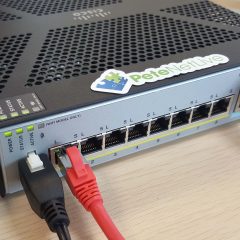ASA 5500 Adding a DMZ Step By Step
KB ID 0000316 Problem Assuming you have a working ASA 5500 and you want to add a DMZ to it, this is the process. Assumptions 1. Networks, a. Inside network is 10.1.0.0 255.255.0.0 b. Outside network is 123.123.123.120 255.255.255.248 c. DMZ network is 172.16.1.0 255.255.0.0 2. Interfaces, a. Inside Interface is 10.1.0.254 b. Outside Interface is 172.16.1.254 c. DMZ Interface is 172.16.1.254 3. The Web server in the DMZ will have the...
Blocking Google Talk (Cisco ASA)
KB ID 0000323 Problem You want to block access to Google Talk, but not disrupt other services like Google Search and Gmail. Solution Yes, you could write a REGEX and block it with an MPF, like I did here, to block Facebook. But Google Talk only runs on 4 servers and uses 4 ports. 1. Connect to the Cisco ASA, and go to configure terminal mode. PetesASA> PetesASA> en Password: ******** PetesASA# configure terminal...

